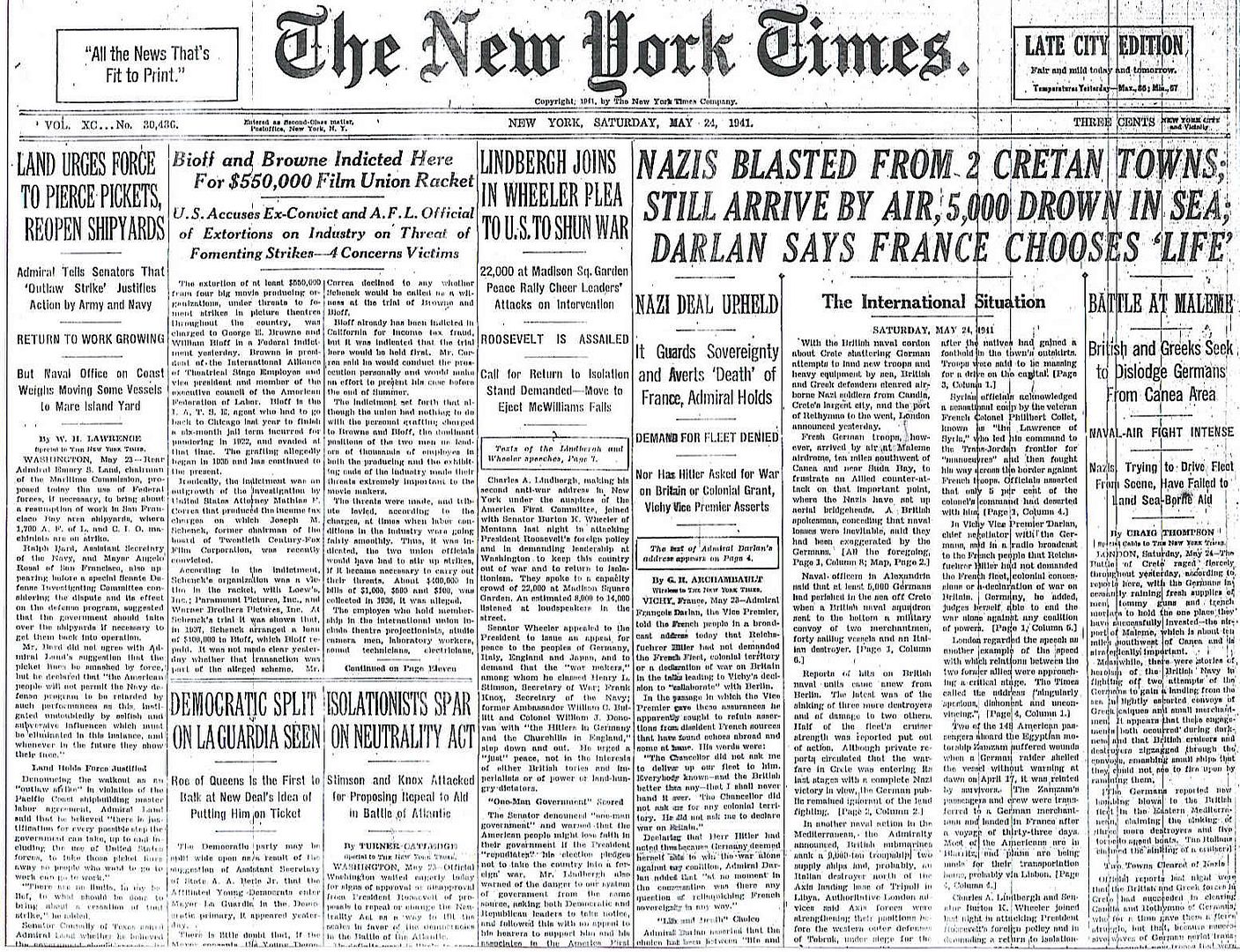
Posted on 05/24/2011 5:16:18 AM PDT by Homer_J_Simpson

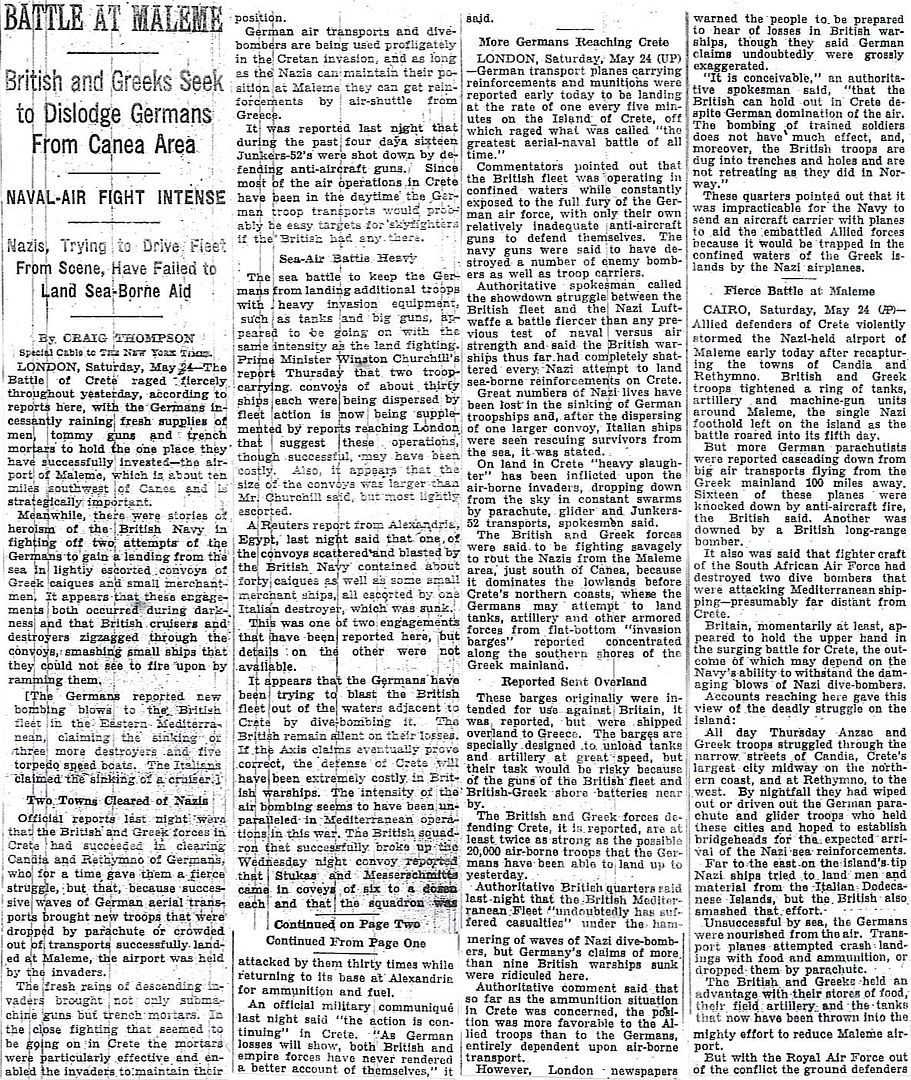
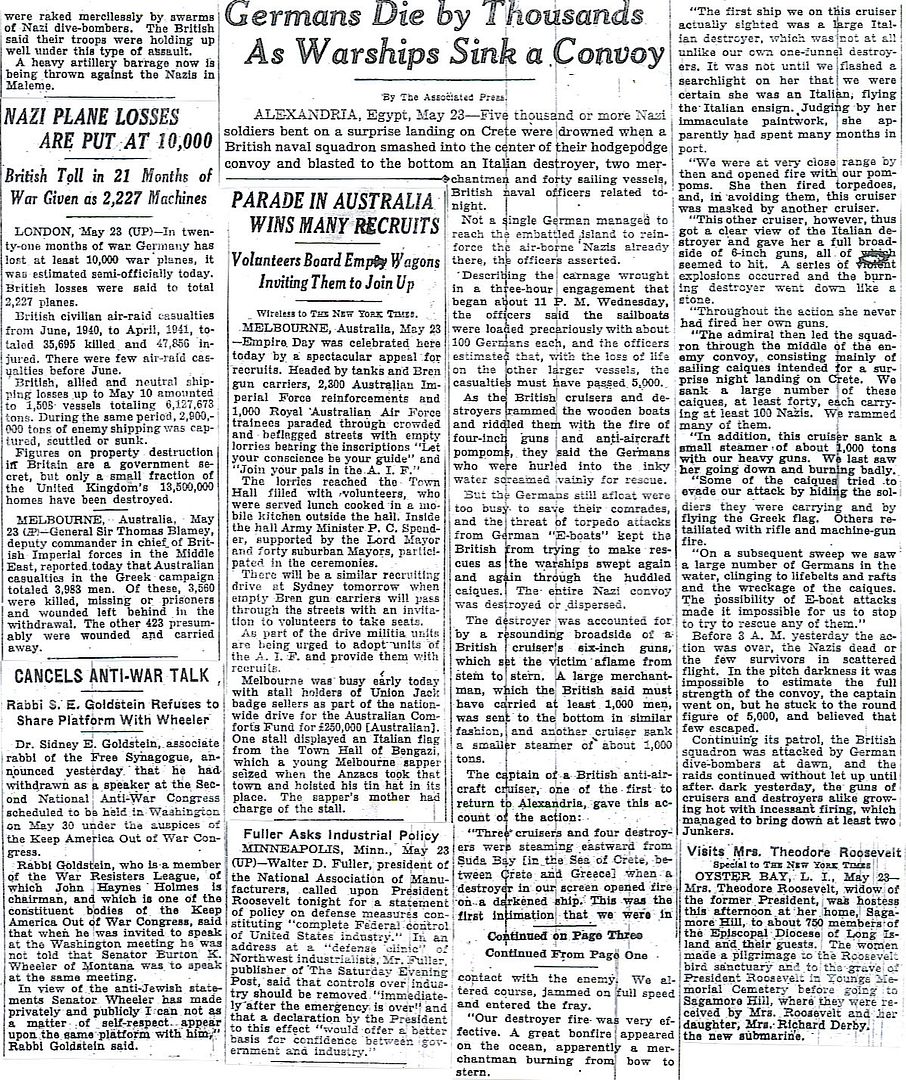
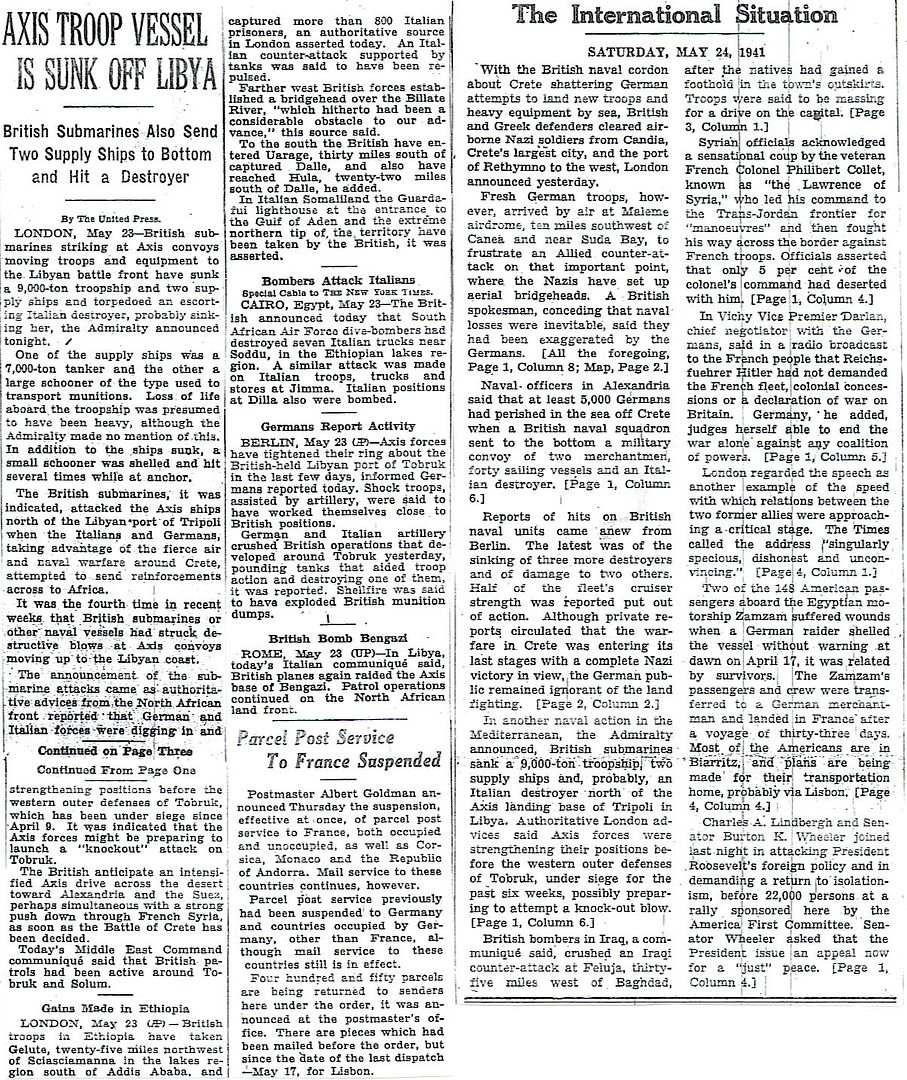
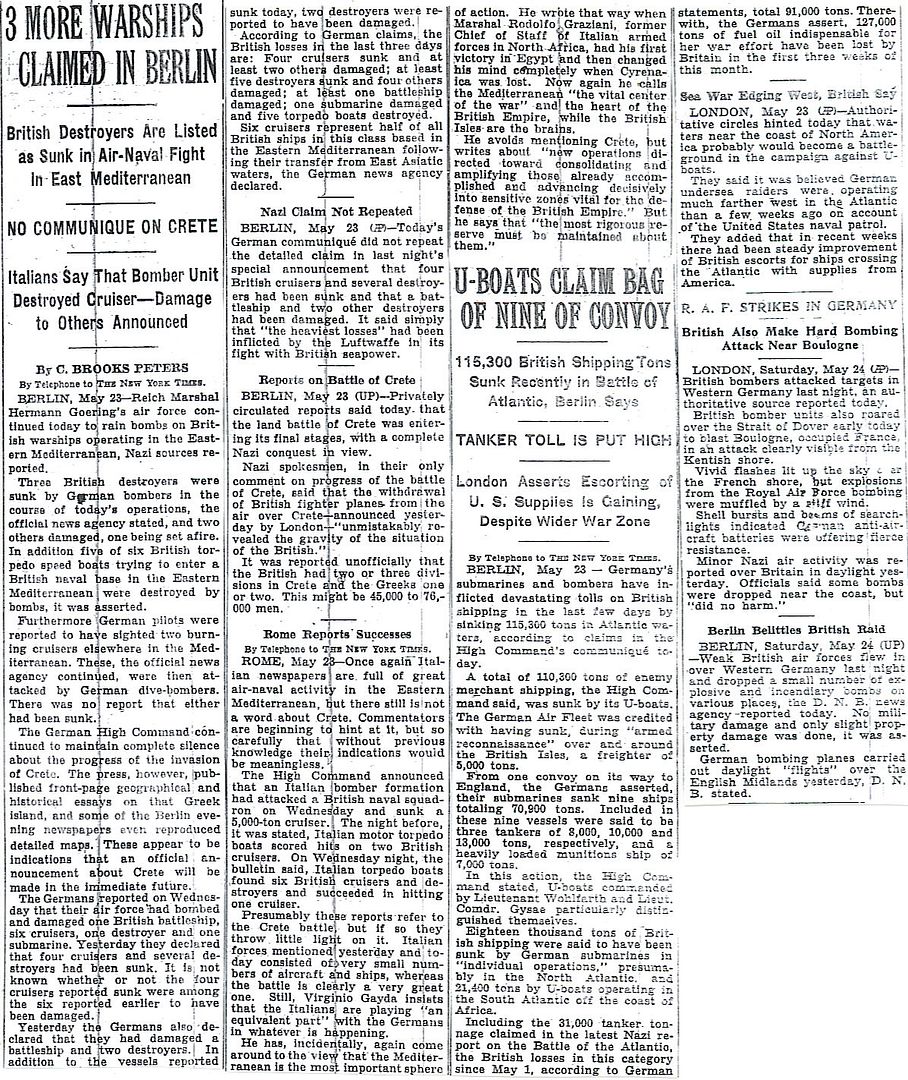

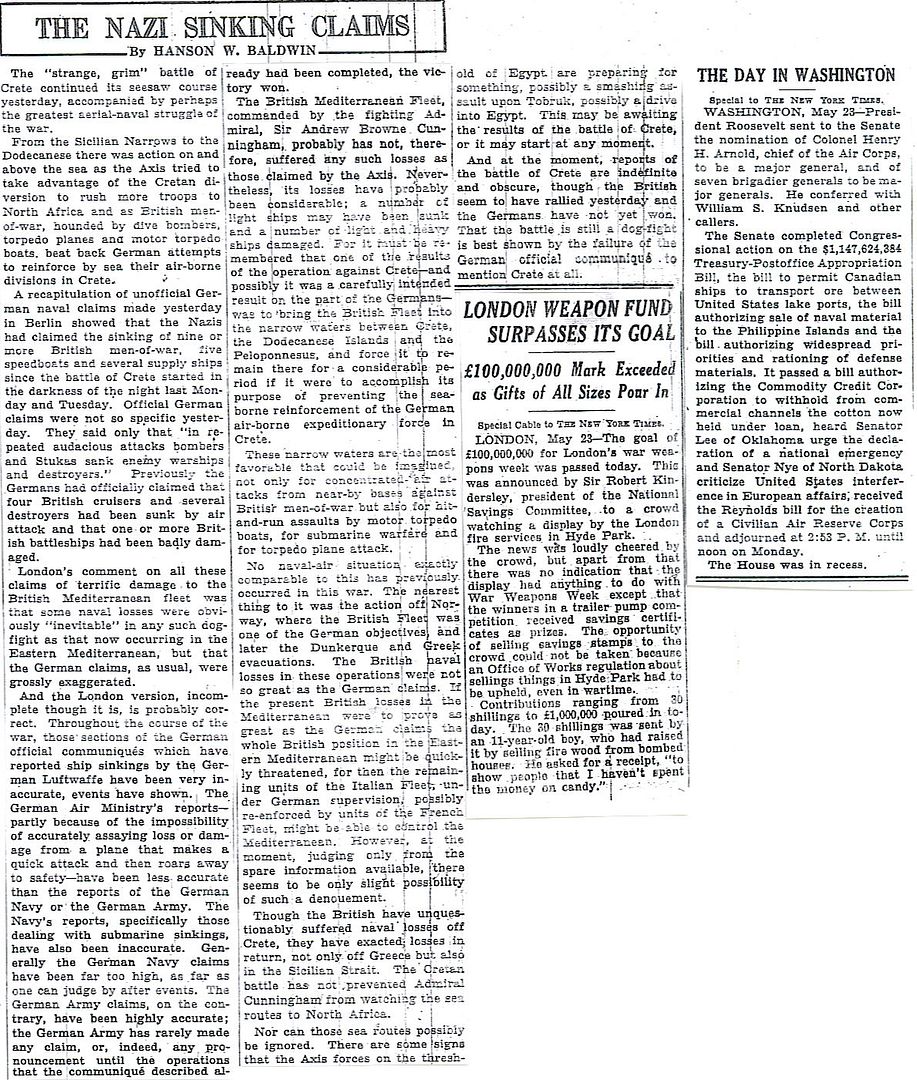
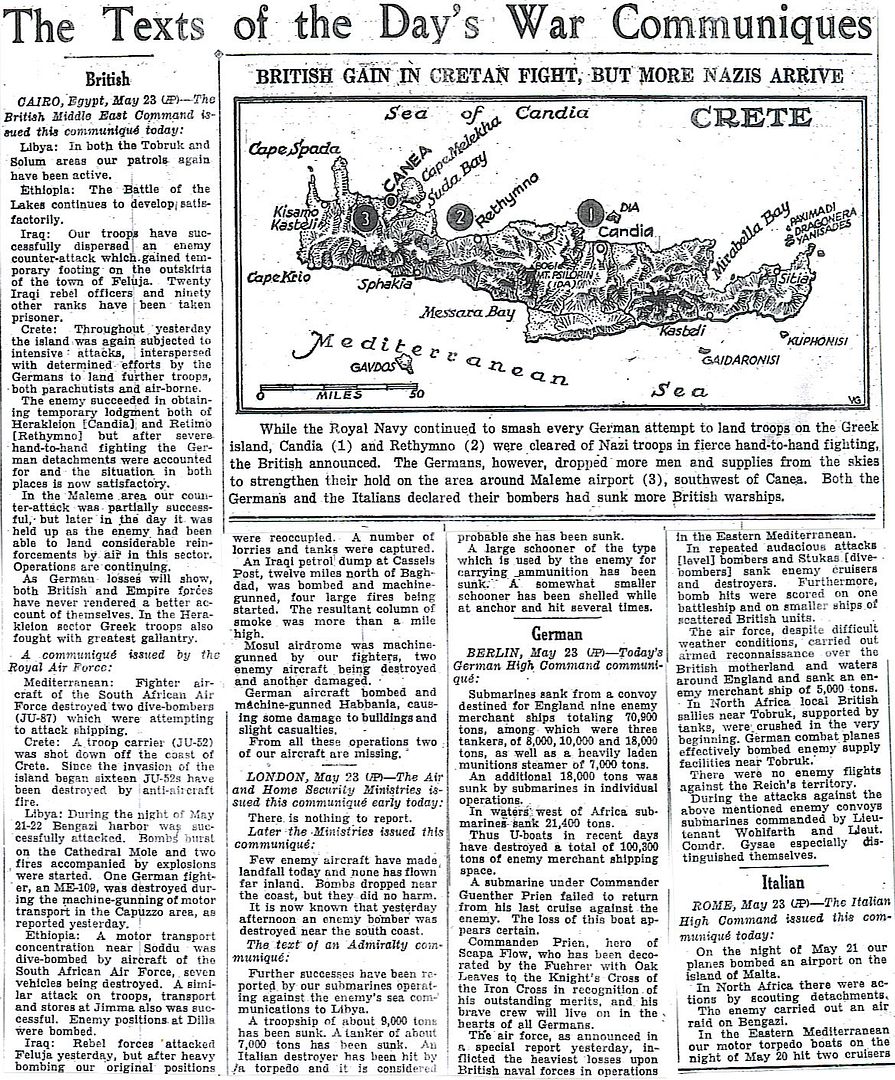
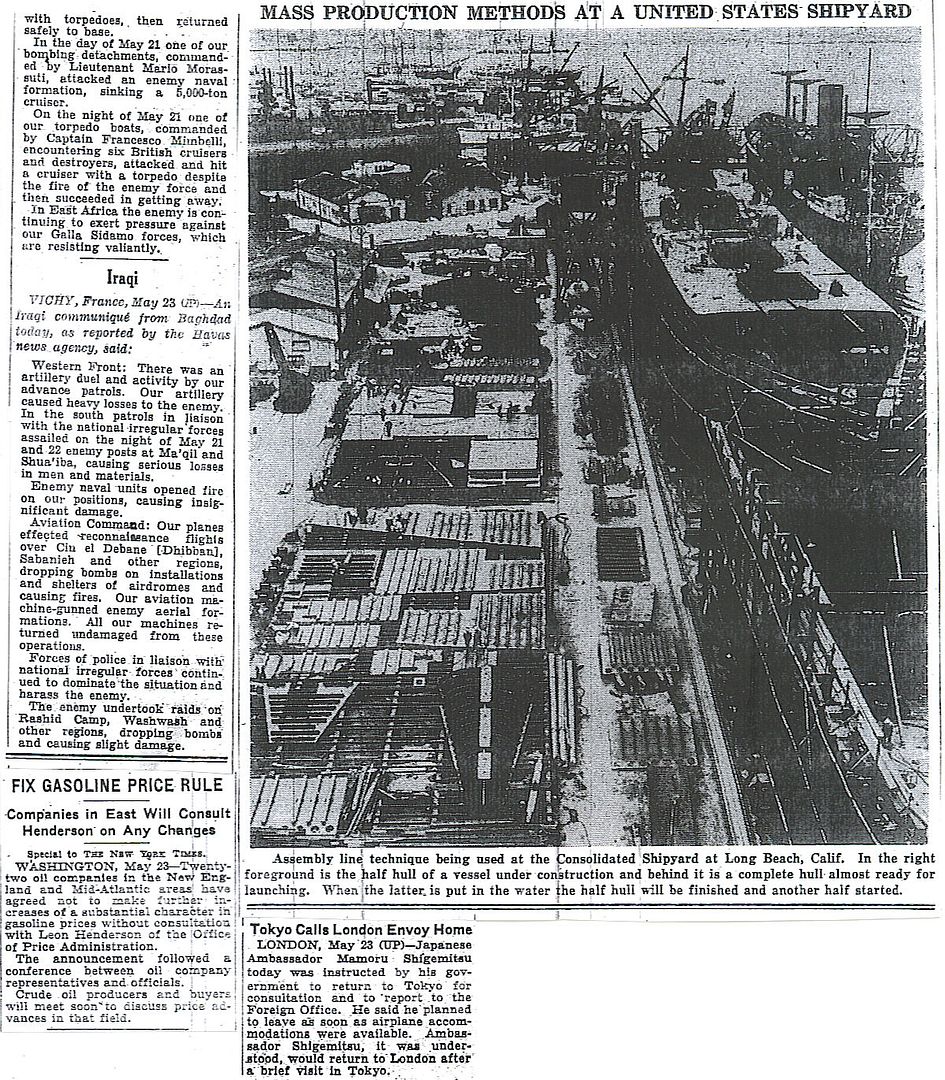


Your Bismarck/Hood photos are outstanding.
Homer, no amount of thanks can ever repay you for your hard work on what is surely one of the most interesting threads ever posted on FR (and the Internet in general, it seems)
The HMS Hood Association website is constantly receiving new information - pictures from descendants of crew members and so forth. It represents a quantum expansion of knowledge that was not possible via an ink-on-paper format.
The Bismarck website is equally impressive. As that ship had just been put into service, her/his history wasn’t near as colorful as that of HMS Hood, but the website misses nothing.
It would be almost impossible to physically assemble a library of printed books to match what’s on these two websites.
Within a year or so of that movie, this book was published. I read it when I was about 12 years old or so. It was to me quite a read!
The Sinking of the Bismarck: The Deadly Hunt
By William L. Shirer
I didn’t know Shirer wrote about Bismarck, but I am not surprised. He was quite a prolific author; I’ve read “Rise & Fall of the Third Reich,” “Collapse of the Third Republic” and “The Nightmare Years.” Other than “Rise & Fall” most of his works are no longer in current print, which is too bad. My copy of “Collapse of the Third Republic,” first read when I was in 8th grade, is literally disintegrating in my hands when I try to consult it for reference.
I read C.S. Forester’s “Sink the Bismarck,” on which the movie was loosely based, when I was in 7th grade, or when I was about 12 also. That was when my interest in history was really starting to blossom.
About that time (1972 or so) Ballantine was publishing a paperback series of illustrated WW2 books. They only cost a dollar. I’d bum a buck fifty off my mom, and head to the mall. A dollar for a book at B. Dalton’s, the rest for some giant Sweet Tarts and Charms big pops at Hook’s Drugs. Good Lord, I was one nerdy kid in Junior High.
From the movie:
http://www.imdb.com/title/tt0054310/quotes
Edward R. Murrow: This is London, Ed Murrow reporting. This island, which is no stranger to bad tiding, received news today that HMS Hood largest warship in the British fleet and pride of the British navy, has been sunk by the German battleship Bismarck. From the Hood’s compliment of 1500 men, there were three survivors.
The Bismarck book he wrote was geared toward young adults, iirc. I read a condensed version of “Rise and Fall” years ago. I think I have a copy in my stack somewhere.
Shirer was one of the original Murrow Boys and was one of the first to work with him in Europe.
Just finished this the other day.
The Murrow Boys: Pioneers on the Front Lines of Broadcast Journalism
Lynne Olson (Author), Stanley W. Cloud (Author)
http://www.amazon.com/Murrow-Boys-Pioneers-Broadcast-Journalism/dp/0395877539
I've got a couple dozen of those laying around. Picked some up the other day at a library book sale.
Can you imagine how it would have been back forty or fifty years ago when we were young and first got interested in military history, if we had the internet, The History Channel and all the books now available?
“if we had the internet, The History Channel...”
Yeah...I would have been an expert on pornographic UFO encounters! (Just kidding).
If you have a love of history, there have always been resources available to satisfy your curiosity. The internet and cable TV have helped a lot, but no matter what era, the first thing you need is a critical mind coupled with an inquisitive nature.
When I was about 15 (1965) I saved up all my allowance and scraped up $40 to buy a copy of the 1941 edition of Jane’s Fighting Ships. Wrote to a used bookfinder and they located a copy. Still have it in my library.
My folks had a FIT that I would spend money on such a thing!
My wife went to the “book sale” at the local public library a few years ago, where they sold off unwanted inventory. She came back with Jane’s Fighting Ships of 1914 and 1924. I think she spent $5.00 for them. She said she wasn’t sure I’d want them but when I practically did handsprings she felt more comfortable with her decision.
I used to scrape up allowance money and buy SPI board games like Kursk and Moscow Campaign. I can’t believe I sent them cash and they sent the games. I also subscribed to Strategy & Tactics to get the games that came with every issue. I still have a set of them in the attic. Even with the advent of computer games, I just can’t part with the cardboard unit counters.
I had the same discussions with my parents.
I got a Remington .22 from Sears & Roebuck that way.
Oh, I don't know. After your reply I am feeling pretty darn repaid. Besides, These threads really start to get interesting when folks like Larry381 and abb bring them to life with the history behind the news stories. The photos I have seen here over the last few months have been simply unbelievable.
Later in the day of May 24, 1941.

After the battle in the Denmark Strait, the German ships continued on a south-western course. At this time Lütjens had two main options. The first was to return to Norway and the second to carry on into the North Atlantic. Today most people agree that, if at all possible, Lütjens should have destroyed or at least disabled the already damaged Prince of Wales, then turn around, and head for Trondheim, via the Denmark Strait. Lütjens could also have taken a shorter path to Bergen, via the Faeroes-Iceland passage, although the chances of being intercepted by Tovey's battle group (King George V, Repulse, and Victorious) coming from Scapa Flow were greater as well. Instead, the German Admiral opted not to pursue the Prince of Wales (apparently against Captain Lindemann's suggestions) and headed for the Atlantic. At 0801, Admiral Lütjens sent a series of messages to the Group North informing it of his intention to take Bismarck to Saint-Nazaire for repairs. The Prinz Eugen, which was undamaged, would stay in the Atlantic to attack enemy convoys on her own.
The decision to head for Saint-Nazaire shows that after a survey of the damage sustained, Lütjens had correctly decided to cancel Operation Rheinübung at least temporarily until the Bismarck could be repaired in port. But, why did he choose Saint-Nazaire? The French port was farther than Norway and it required greater fuel expenditure. Lütjens probably thought France was the best place to resume the battle of the Atlantic as soon as possible following Raeder's wishes. In fact, he had successfully entered Brest with Scharnhorst and Geneisenau a couple of months earlier.
At 0950, Captain Brinkmann was informed by semaphore of the damage received by Bismarck, and afterwards Lütjens ordered the Prinz Eugen to take up position aft of Bismarck temporarily in order to ascertain the severity of her oil loss. By 1100, the Prinz Eugen resumed her previous position in front of the battle group. The three British pursuing ships, now under command of Rear-Admiral Wake-Walker, were still shadowing the Germans; the Suffolk from the starboard quarter, and the Norfolk with Prince of Wales from the port quarter. At noon, the German command transferred the operative control of Operation Rheinübung from Group North to Group West, and at 1240 Bismarck and Prinz Eugen set a new course of 180º due south at 24 knots.
The unexpected sinking of the Hood caused enormous indignation in London, and the British Admiralty began to divert all available warships from their original missions in order to join in the chase for Bismarck. This included leaving most convoys that were at that time crossing the Atlantic unescorted.
The battleship Rodney (Captain Frederick H. G. Dalrymple-Hamilton) was at sea to the west of Ireland on her way to Boston for repairs with destroyers Somali, Tartar, Mashona, and Eskimo of the 6th Flotilla escorting the liner Britannic (27,759 tons), now used as a troop transport. The Admiralty ordered Rodney to operate against Bismarck and at 1036 on the 24th signalled: "If Britannic cannot keep up, leave her behind with 1 destroyer." Therefore Rodney and destroyers Tartar, Mashona and Somali left Britannic with destroyer Eskimo at noon. The battleship Ramillies (Captain Arthur D. Read) to the South of Cape Farewell was also instructed to leave the convoy she was escorting (HX-127) and "proceed so as to make contact with enemy from westwards, subsequently placing enemy between Ramillies and C.-in-C". In addition, the battleship Revenge (Captain Ernest R. Archer) in Halifax was ordered to put to sea, and she left port at 1500, then headed east.
The Prinz Eugen is Detached.
Early in the morning of 24 May, Admiral Lütjens had already decided to detach the Prinz Eugen, and at 1420 sent a semaphore signal to Captain Brinkmann:
«Intend to shake stalker as follows: During rain squall, the Bismarck will change course west. Prinz Eugen will maintain course and speed until he is forced to change position or three hours after the departure of Bismarck. Subsequently, is released to take on oil from "Belchen" or "Lothringen". Afterwards, pursue independent cruiser war. Implementation upon cue word, "Hood".»
This was to be a diversionary manoeuvre in which the Bismarck had to distract the British ships long enough to let the Prinz Eugen escape. Meanwhile, Vice-Admiral Karl Dönitz had ordered the U-boat force a complete cessation of operations against merchant shipping in order to support the Bismarck. At this time Lütjens urged Dönitz on a radio telegram to assemble his U-boats in quadrant AJ 68. His intention was that Bismarck would be able to lead the British pursuing ships into a trap the next day. Therefore Dönitz stationed several U-boats (U-93, U-43, U-46, U-557, U-66, U-94) in the given area to the South of the southern tip of Greenland. At 1540, the German battle group entered a rain squall, and the execution order of "Hood" was given. The Bismarck turned to starboard at 28 knots, however the Suffolk was shadowing very close from the starboard quarter and the manoeuvre failed. Therefore, at 1600 the Bismarck resumed her position on Prinz Eugen's wake. Two hours later, at 1814, the Bismarck turned to starboard at high speed again. This time the manoeuvre was successful and the Prinz Eugen maintained her course and left the formation. The Bismarck closed on the Suffolk, and at 1830 opened fire from 18,000 meters (19,685 yards), but the cruiser quickly retired under a smoke screen. Subsequently, the Bismarck became engaged with the Prince of Wales at long distance, and after an exchange of shells the fire ceased at 1856. After this action, in which no hits were scored by either side, the Suffolk joined the Norfolk and the Prince of Wales back to the port side of the Bismarck, probably to avoid being surprised by the German battleship if she decided to reverse her course again. This left Bismarck’s starboard side open. The British would pay a high price for this manoeuvre a few hours later, but before this they would still have an opportunity to attack the Bismarck.
The fuel situation aboard Bismarck had become serious, and at 2056, Lütjens informed Group West that, due to fuel shortage, he was to proceed directly to Saint-Nazaire. In fact, at this time the Bismarck had less than 3,000 tons of fuel-oil available, and unless some of the 1,000 tons of fuel blocked under the forecastle could be retrieved, the battleship would be forced to slow down in order to reach the French coast. Had Bismarck been refuelled in Bergen on 21 May, now she would have some 1,000 tons more of additional fuel available. That would have given Bismarck more freedom of movement and would have enabled Lütjens to make a diversionary manoeuvre to try shake off his pursuers. But the reality was that the fuel shortage hampered the original idea to drive the pursuing British forces into the western U-boat screen, and it forced Bismarck to follow a steady course to France. As a result of this change of plans, all available U-boats in the Bay of Biscay were now ordered to form a patrol line to cover Bismarck's new expected course.
Attacked by Swordfish Torpedo Planes.
At 1509, Admiral Tovey had detached Rear-Admiral Alban Curteis (in Galatea) with the carrier Victorious (Captain Henry Cecil Bovell) and the four light cruisers Galatea, Aurora, Kenya and Hermione to close the range and deliver a torpedo attack. At 2210, some 120 miles from Bismarck, Victorious launched all her nine Swordfish torpedo planes of the 825th Squadron under the command of Lieutenant-Commander (A) Eugene Esmonde.1 At 2300, they were followed by three Fulmars of the 800Z Squadron, and at 0100 by two more to maintain touch. Esmonde obtained a surface contact on his ASV (Air-to-Surface Vessel) radar at 2350, and prepared his aircraft for the attack, but instead of Bismarck he found the US Coast Guard Cutter Modoc (Lieutenant-Commander Harold Belford). The Bismarck, only six miles away, spotted the British aircraft and opened fire immediately while increasing the speed to 27 knots.
One Swordfish lost contact with the rest of the squadron in a cloud layer, and only eight planes proceeded to attack around midnight. The German anti-aircraft fire was very intense and even the main and secondary batteries opened fire. Lindemann and the helmsman, Hans Hansen, operating the press buttons of the steering gear, successfully avoided the first six torpedoes when suddenly the battleship was hit. A 18 inch MK XII torpedo struck Bismarck's starboard side, amidships, at the level of the main belt which resisted the explosion very well. The damage was minimal, although the explosion caused the death of Oberbootsmann Kurt Kirchberg (who became the first casualty aboard) and injured six men.
Despite the heavy anti-aircraft fire none of the obsolete Swordfish were shot down, and by 0230, all of them had landed on the Victorious. However, the last two Fulmars that had been launched from Victorious were not so fortunate, and they were lost after they ran out of fuel and were forced to land in the sea. The crew of one of them was rescued later by the merchant ship Beaverhill.
I have to admit, all the money from my paper route during junior high went towards girls. I parlayed that in college when I majored in beer and girls. I came to find that beer is less expensive, but not as satisfying.
http://www.hmshood.com/history/denmarkstrait/pofw_damage1.htm
Battle Damage Sustained by H.M.S. Prince of Wales, 24 May 1941
Disclaimer: Opinions posted on Free Republic are those of the individual posters and do not necessarily represent the opinion of Free Republic or its management. All materials posted herein are protected by copyright law and the exemption for fair use of copyrighted works.